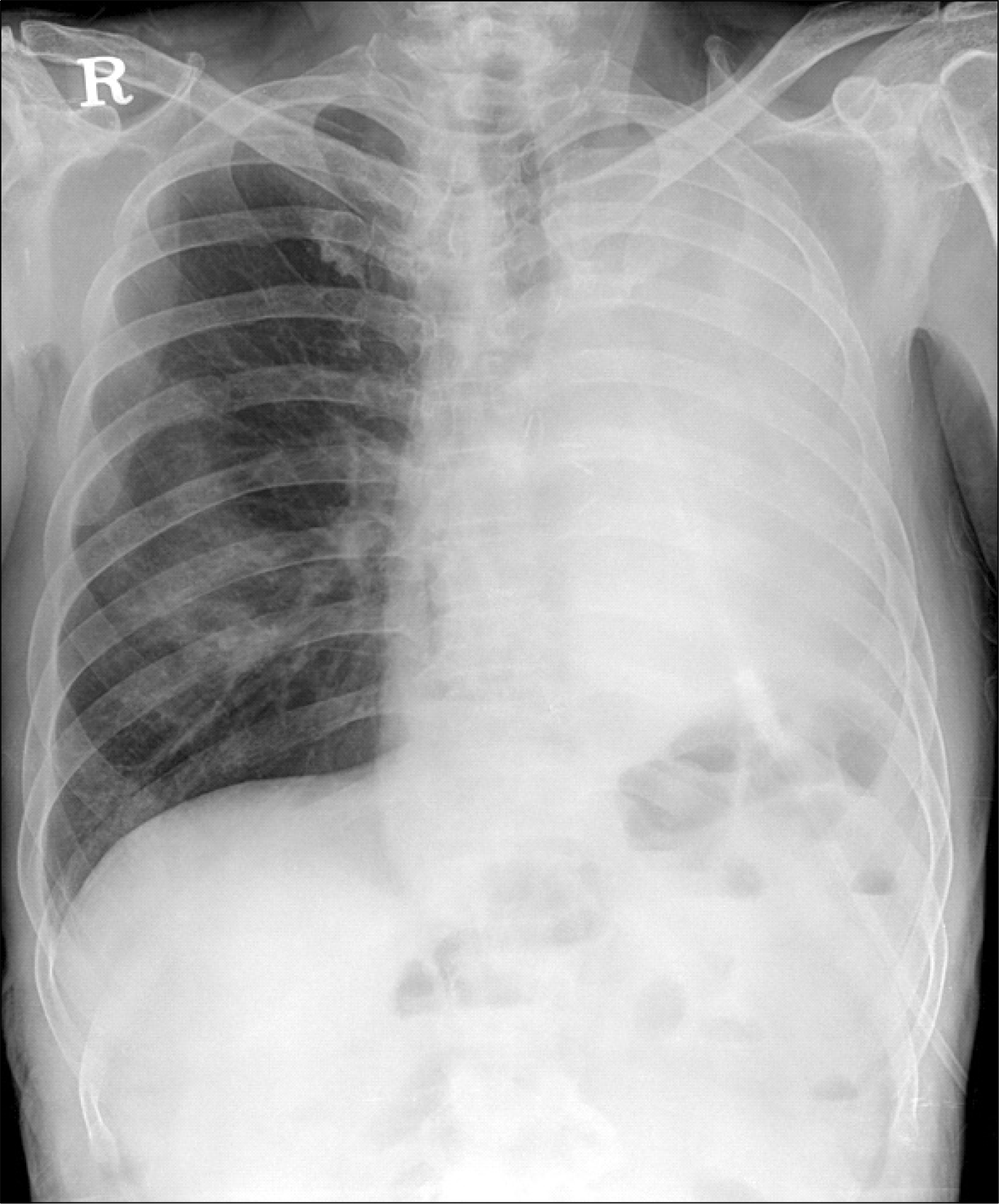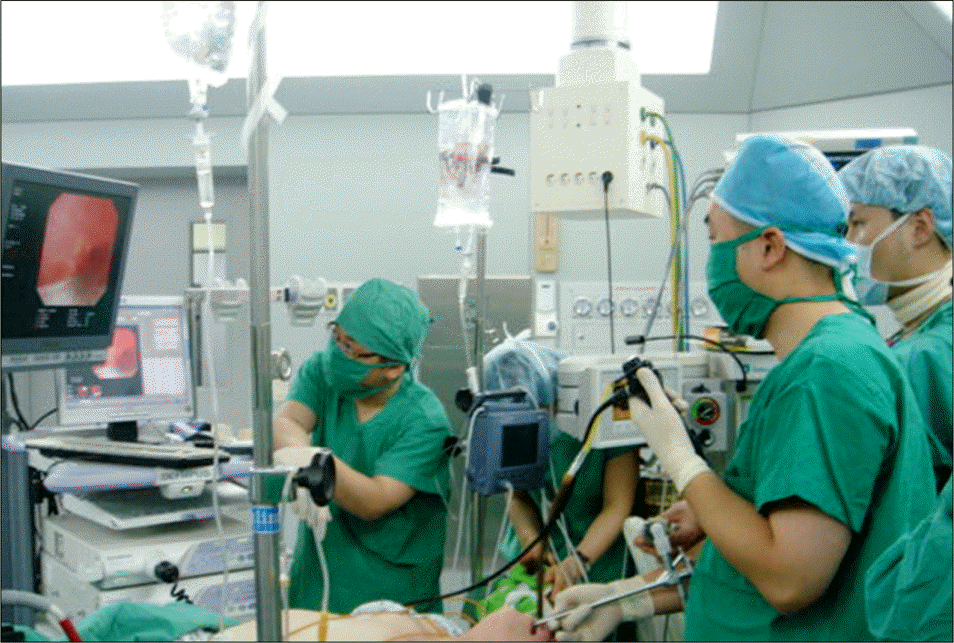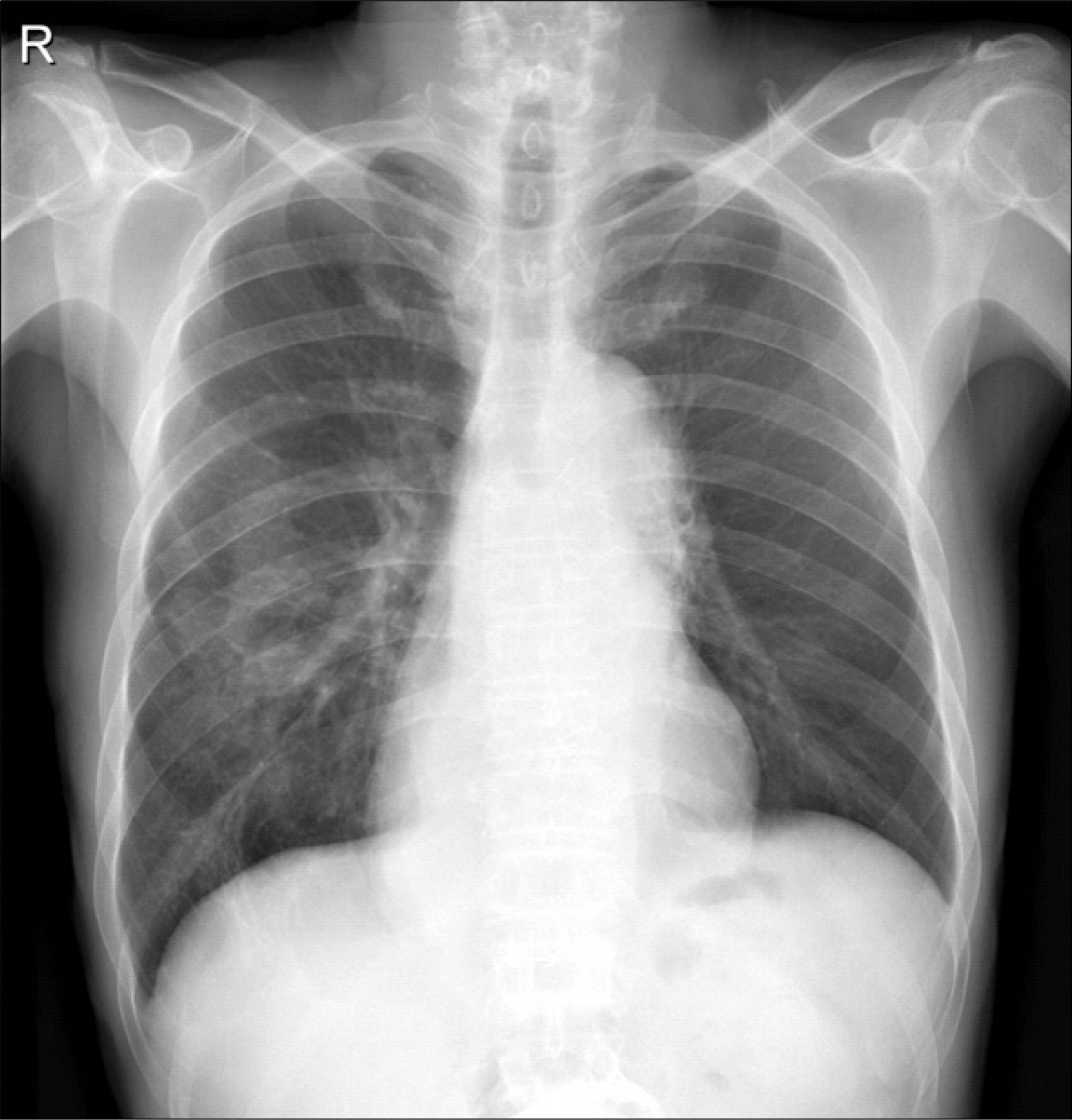Abstract
A 66-year-old man with recurrent esophageal cancer was admitted to our health care facility for evaluation of resting dyspnea. He had undergone an esophagectomy with cervical esophagogastrostomy in May 2007 and had undergone radical radiation treatment from June to August 2007. After 6 months, he complained of cough and dyspnea. A metastatic lymphadenopathy, 4 cm in size, was in the paraaortic space and compressed the left main bronchus, resulting in total atelectasis of the left lung, as demonstrated on follow-up chest simple x-ray and CT (Fig. 1, 2). He initially received one cycle of chemotherapy consisting of docetaxel and cisplatin, but there was no change in the lung atelectasis and the dyspnea had worsened. The decision was therefore made to perform a rigid bronchoscopy. Under general anesthesia, an endobronchial obstructive lesion was removed using a mechanical core-out technique with rigid bronchoscopy (Fig. 3). After the procedure, the atelectasis resolved nearly completely, and neither severe bleeding nor other complications were noted (Fig. 4). The dyspnea was relieved from ATS (American thoracic society) grade 4 to grade 2. Following this treatment, chemotherapy for recurrent esophageal cancer was resumed.
Fig. 1.
Plain chest X-ray obtained for evaluation of dyspnea and showed total atelectasis of the left lung.

Fig. 2.
Chest CT shows a 4 cm necrotizing LAP in the paraaortic space with compression of the left main bronchus, leading to total atelectasis in the left lung.





 PDF
PDF ePub
ePub Citation
Citation Print
Print




 XML Download
XML Download